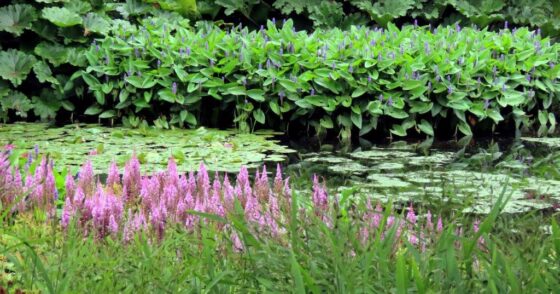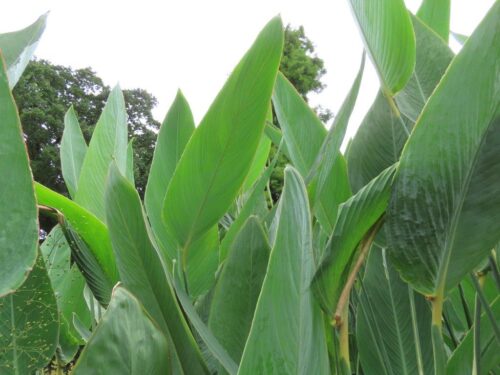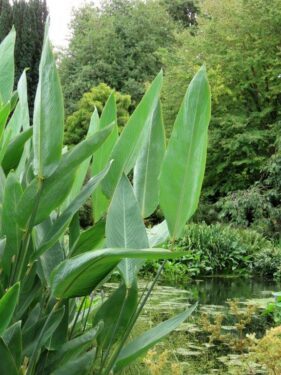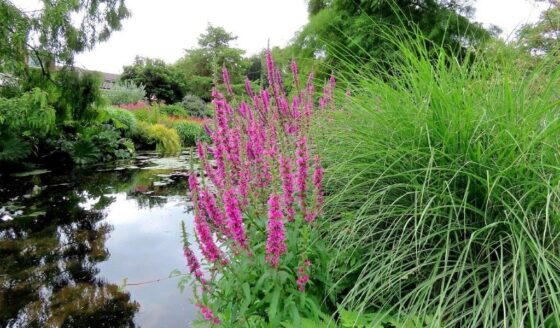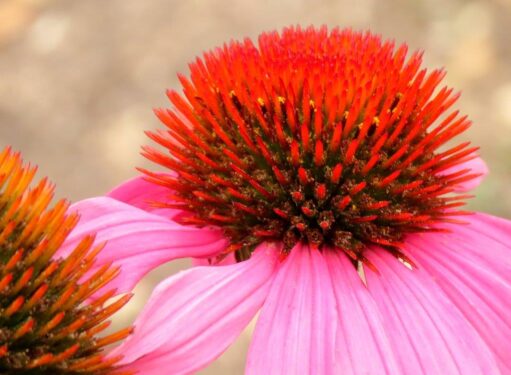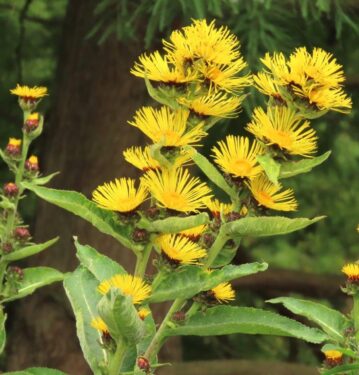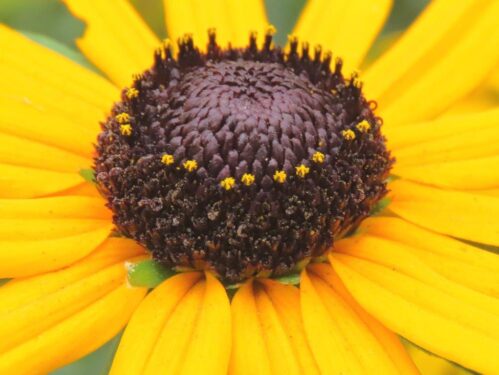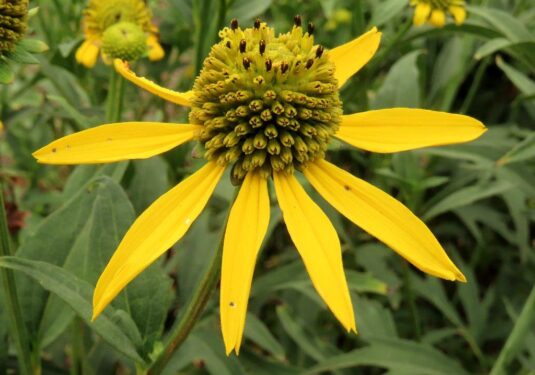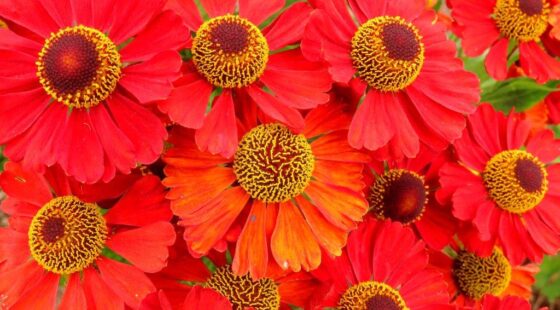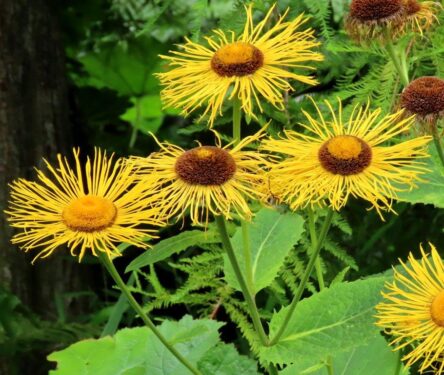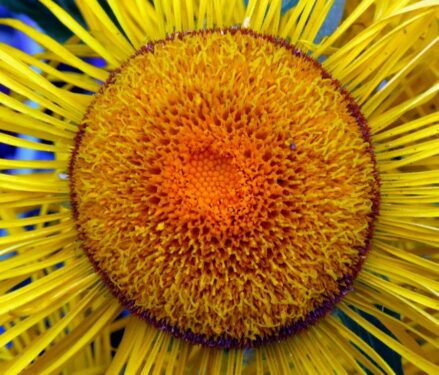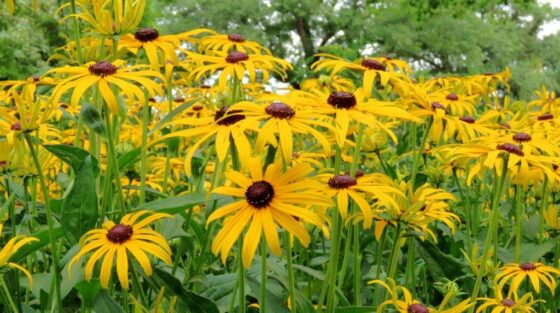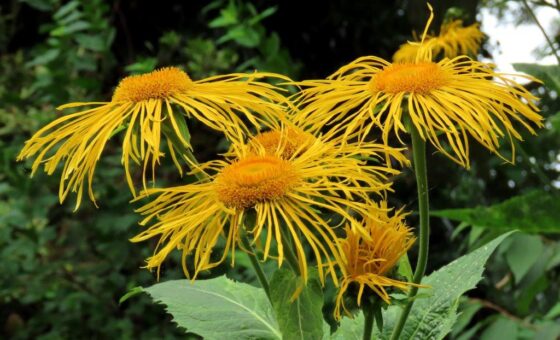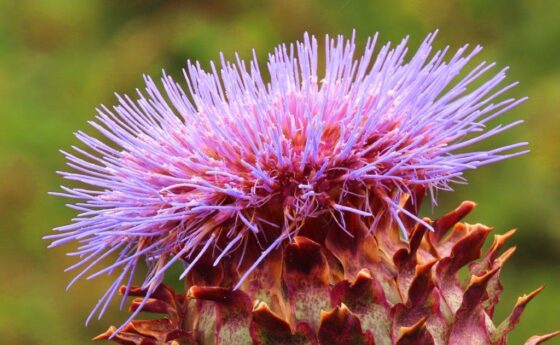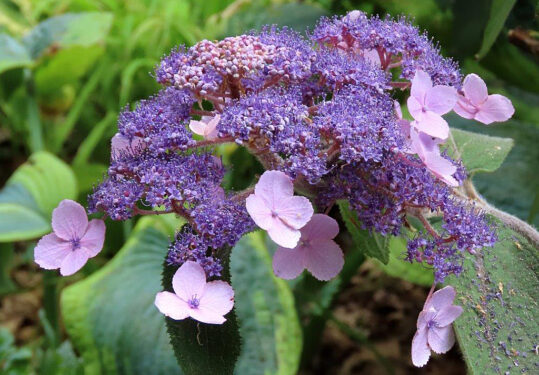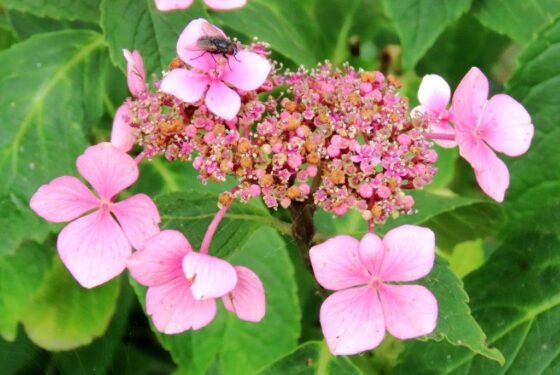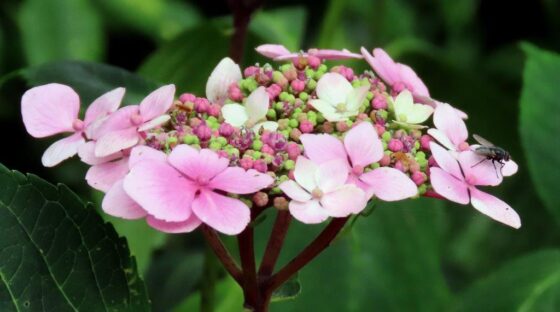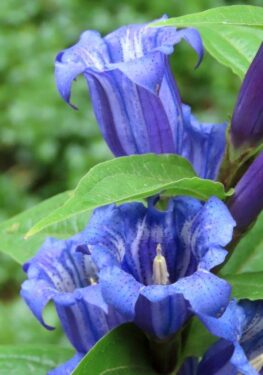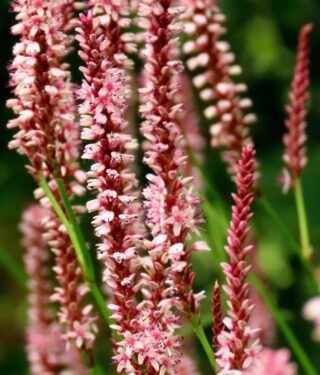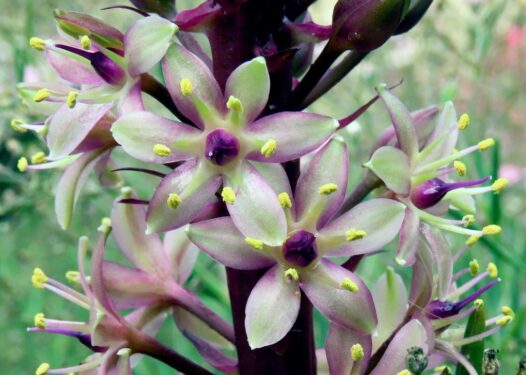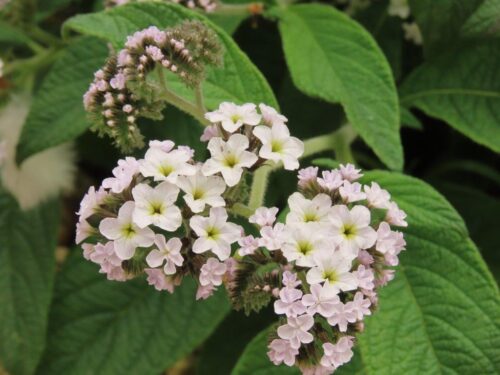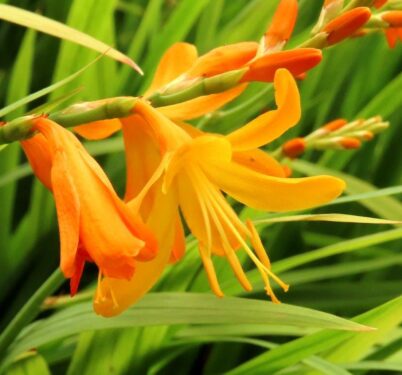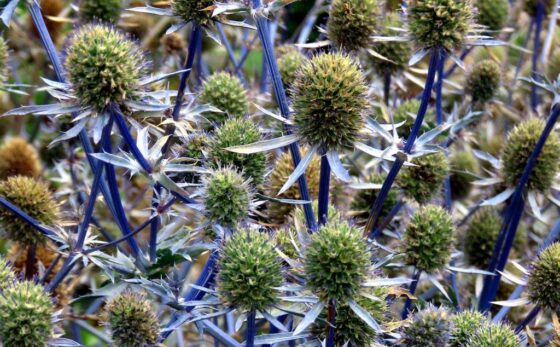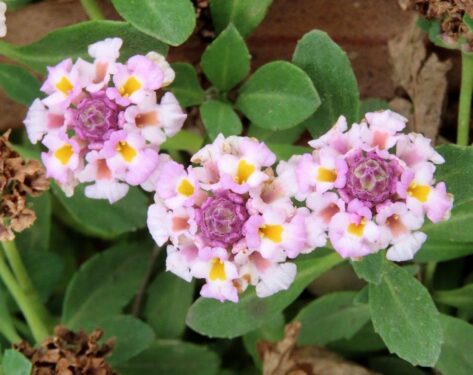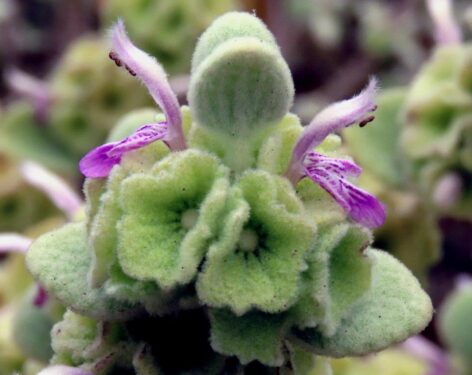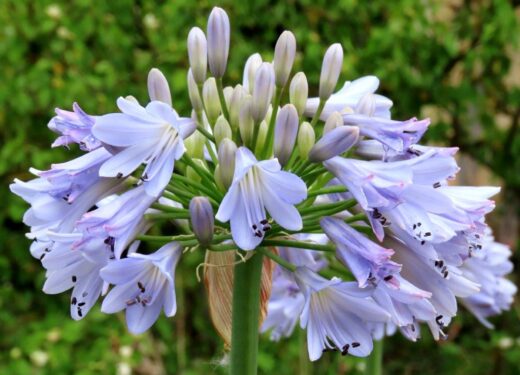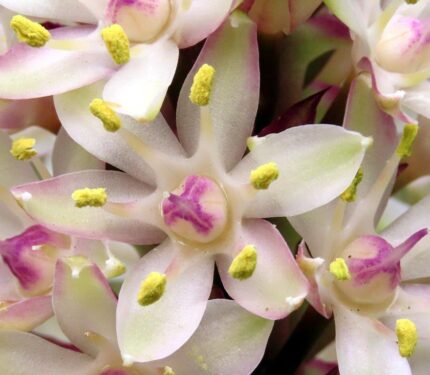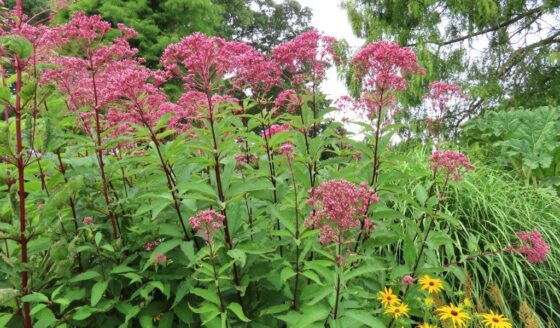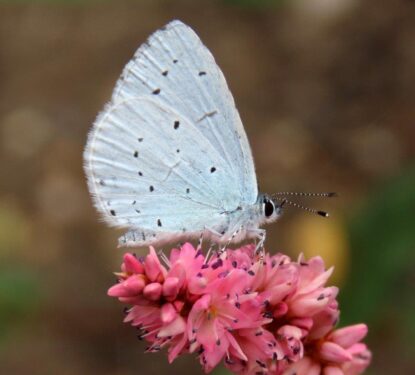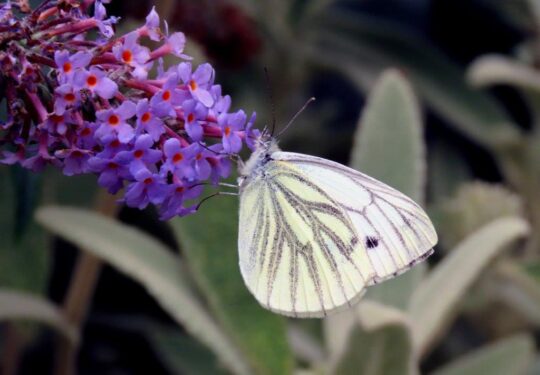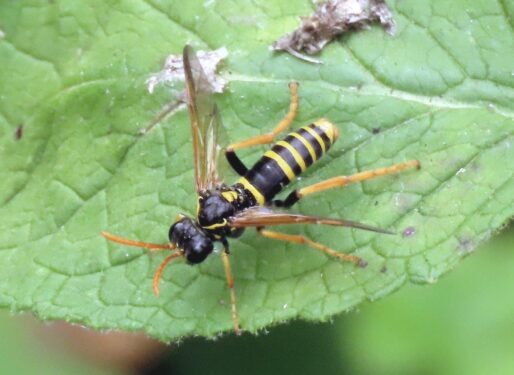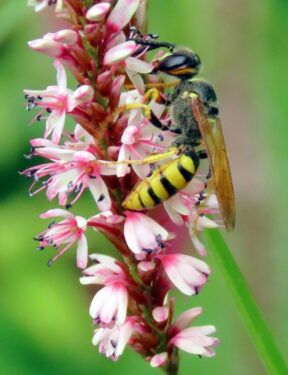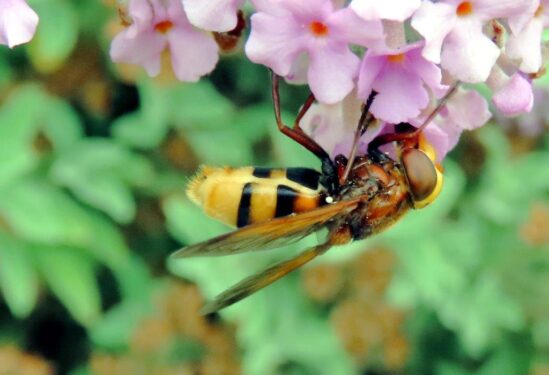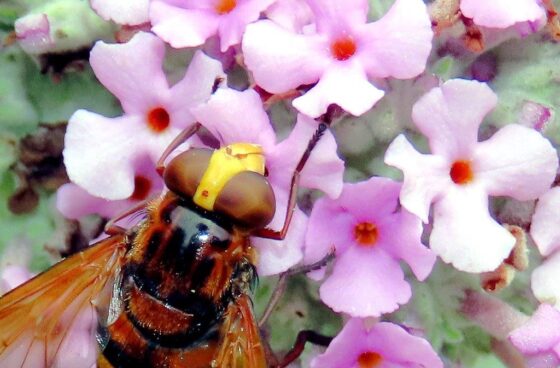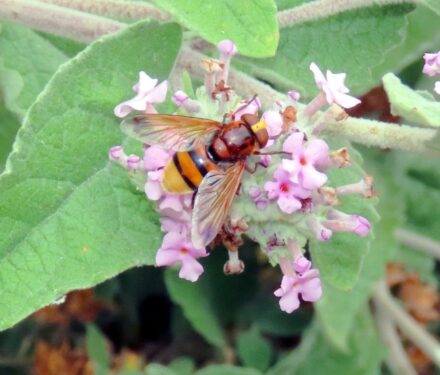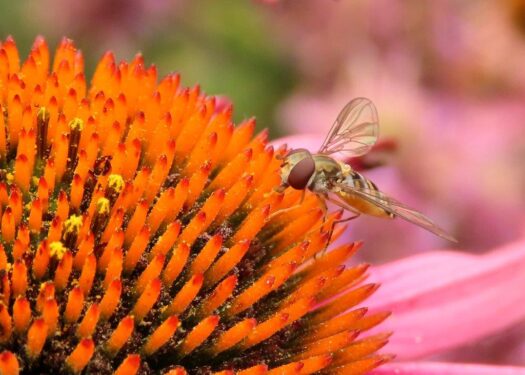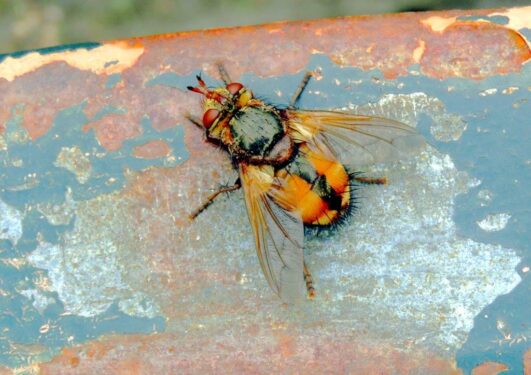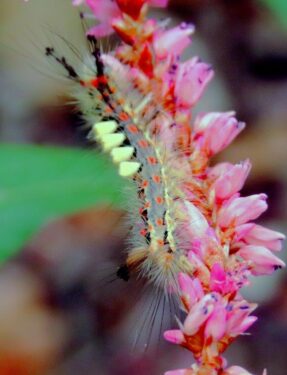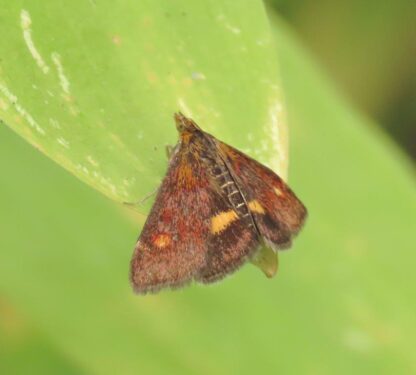Carnage averted! It is a delight to report that the the concerns for our pollinator populations that have been voiced (for example here) over the past year have been heeded – the flower spikes of Thalia dealbata, deadly assassins that kill slowly by trapping insects in their fatal embrace, have been removed. While a few remained when I visited yesterday, and mortality was taking place, I felt that every one gone meant lives saved; but then I was doubly happy to be told that the remaining spikes had been removed by the end of the day.
Beth Chatto Gardens, thank you, on behalf of the little things that make the world go round! It is reassuring to know you are keeping alive Beth’s ecological gardening principles.
In other news, it was a rare dull and humid day, with the second drought of the summer starting to take a grip. Predominant among the flowers were members of the Asteraceae, perhaps better known as composites, or members of the daisy family, as is typical in late summer. A kaleidoscope of colours, each flower-head a plate of food for passing insects:
Also coming to the fore are lace-cap hydrangeas: although unrelated to the daisies, they have an analogous flower structure, with a disc of small, fertile flowers surrounded by showy infertile flowers, to attract insects to the resources within, and in doing so, hopefully effecting pollination. They come in a pleasing array of forms from ‘frothy blue’ to ‘dolly mixture’….
And of course, there are many more plants worthy of a photographic mention, a pastel profusion brought to life with a scatter of vibrant highlights:
Last but not least, the insect visitors. Butterflies have faded away a bit over the past couple of weeks, but bees and wasps, from Bee-wolves to Figwort Saw-flies, have flourished:
Hoverflies too. Often mistaken for wasps, one in particular, the Hornet Hoverfly, one of the largest flies in Britain, is a very effective (harmless) mimic of its (sting-bearing) model, the Hornet.
And a final assortment of insects. It will be interesting to see what survives, what thrives and what wilts in the forecast intense heat over the next week…
